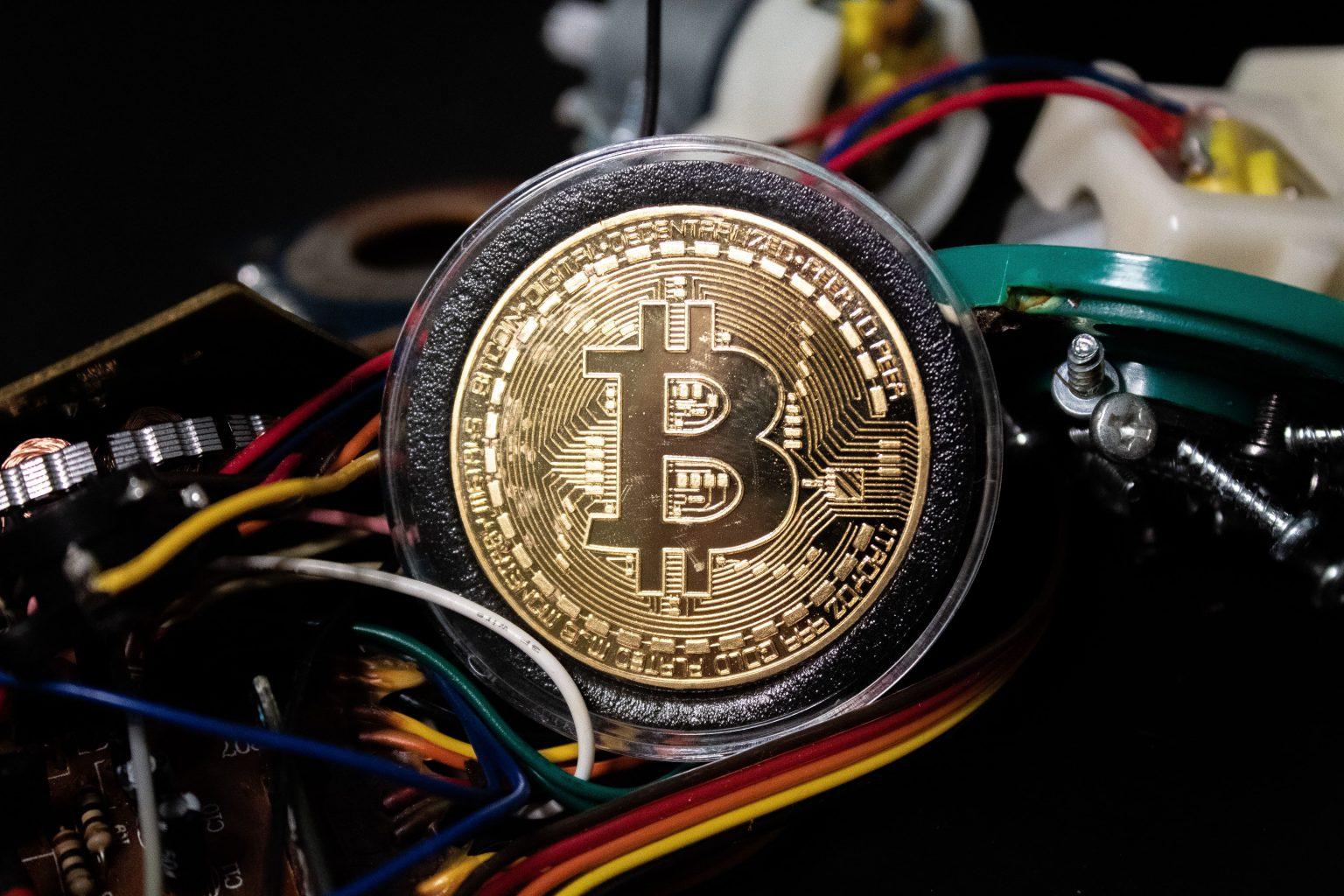What are NFTs and 3 Ways they are Disrupting the Photographic Industry
Leighton Emmons
Mon Nov 15 2021

NFTs or Non-Fungible Tokens feel like all the craze today. In the universe of digital ownership, the tool is more than just a fad, its providing real utility to many digital content creators – extending into the photographic industry.
In this article we’re going to get into what NFTs are, a bit about how they work, and why they’re potentially game changing to photographers.
NFTs provide photographers with a few previously unanswered problems:
- Transferring digital ownership without the need to pay commissions
- Collecting royalties for the lifetime of your images
- Providing a transparent way of authenticating the origin of any photograph and the true current owner
Before we get into these benefits in-depth, we need to clarify some background understanding. Bear with us…
What is a Non-Fungible Token and what is the blockchain?
Let’s first give it some context.
To start, what is a token? To make sense of what a digital token is, we’ll have to explore the concept of the ever-elusive word you’ve probably heard of by now: the blockchain.
The blockchain, simply put, is a programming style that doesn’t rely on a centralized processor. Think of Google and Amazon. These services process your information and data through their owned servers – via a ‘centralized’ source. You search something on Google, and a request for data gets sent to some fancy server in California. Simple.
By contrast, Blockchain relies on what’s referred to as a ‘decentralized’ system. That is, instead of one centrally owned server, the system operates through lots of smaller servers (called ‘nodes’) all around the world which contribute to processing transactions. The reason it works is because regular folks, like you and I, offer our computers’ processing power to the system to help process transactions. In return, we get paid a small reward for helping process the transaction (for simplicity’s sake we’re going to leave the explanation on how the blockchain maintains itself here).
Now, because many people are contributing to the processing of transactions on the blockchain, it’s important everyone has equal and fair access to all the information. Thus, what makes blockchain technology so unique is that all the transactions and information processed on the blockchain are shared publicly on something called a ‘distributed ledger’ – a public dossier of every transaction ever made. Whether its cryptocurrencies like Bitcoin and Ethereum, or Non-Fungible Tokens being exchanged on the blockchain, everything is recorded and shared with everyone. In this way, blockchain technology reimagines how the internet can be made ‘by the people, for the people’.
Without getting into the technicalities too much here, the blockchain is considered extremely secure. More than that, everything that is processed on a blockchain, is permanently recorded and documented. Once completed, no transaction can be erased or manipulated.
Okay, Blockchain makes a little more sense now, but wait, how is an NFT different from a cryptocurrency if they both exist on the blockchain?
What makes NFTs different from regular cryptocurrencies like Bitcoin and Ethereum is every NFT is totally unique and non-fungible.
Meaning, you can exchange 1 Bitcoin for 1 Bitcoin just as you would 1 US Dollar for 1 US Dollar because these tokens/assets are fungible. That is, every Bitcoin is effectively identical. There is no difference between each one and one can easily replace another.
Oppositely, as it is in the name, NFTs are by definition non-fungible. Meaning, every single NFT is represented as a unique digital token and no two NFTs are the same. You can’t replace one NFT with another one just as you might 1 Bitcoin with 1 Bitcoin. That’s how they’re different.
…Have we lost you? We hope not…
Having cleared the air on how NFTs and cryptocurrencies are different, we’ll need to address how they are similar. NFTs at their core are still tokens – digital tokens that is. This may be slightly confusing, but the point here is NFTs and cryptocurrency tokens alike, are all represented as digital code on the blockchain. Meaning, while NFTs are different in nature to cryptocurrencies, because everything is represented as a digital token, NFTs can be exchanged on the blockchain just as you would Bitcoin and other cryptocurrencies.
In this way, NFTs function on the blockchain the same as cryptocurrencies (because they are all still digital tokens), but they serve a totally different purpose.
NFTs allow us to take any digital asset such as music files, digital art, video clips, online signatures, photographs, really anything, and turn it into a digital token. Once you have created this digital token for your piece of art, you can then exchange it for cryptocurrencies – or simply put, for other digital tokens.
Ie. NFTs have opened the door for all the security, transparency, and traceability benefits of cryptocurrencies to now extend into the realm of art, music, video, photography – you name it.
And THIS is what is so exciting about NFTs.
Just as cryptocurrencies are very much reimagining the way financial assets can be stored and transferred from one person to another, NFTs are using the same technology to reimagine the way digital art is being stored, shared, transferred, and viewed.
Now, hopefully you have a more thorough understanding of the technology and how it works, now let’s talk about why it matters specifically to photographers:
 The technology behind cryptocurrencies is bringing the value of decentralized finance to the world of art.
The technology behind cryptocurrencies is bringing the value of decentralized finance to the world of art.
1. Direct transferring without the need to pay commissions
The great thing about cryptocurrencies is you can transfer them from one person to another without any intermediary. You don’t pay a bank to route your money to the other side of the world, you simply send the money yourself directly to that person’s wallet.
It’s exactly the same for NFTs. If you as a photographer turn a bunch of your photographs into NFTs (through a process called minting, which we’ll get to below) you can have someone buy those NFTs from you and pay you directly, without needing to pay any commissions to a centralized service.
As it stands, OpenSea is the most prominent NFT marketplace. Naturally, making a sale means you have to pay a small fee for leveraging their platform, but the cost is nothing compared to what conventional photography agencies like ShutterStock and GettyImages will charge in commission.
Thus, NFTs give photographers the ability to truly manage their assets for themselves and reap all the rewards of selling.
2. Collecting payments in royalties for the lifetime of your images
Now, I know we made it seem like all the jargony, complicated, techy mumbo jumbo was out of the way, but there’s ONE more thing we need to cover.
Smart contracts. WTF – we know.
Recall, all NFTs need to exist on the blockchain. There is more than one blockchain out there, but the most popular and widely recognized blockchain that people are using to create NFTs is Ethereum.
NFTs are all created through a process we alluded to earlier called ‘minting’. As the word means, to create an NFT, you need to actually forge, or mint, the NFT itself from digital nothingness.
There are a lot of services that simplify the process and handle the technicalities for you, like on OpenSea – but its still important here to clarify what’s going on behind-the-scenes.
When you create an NFT, what you’re actually doing is creating what’s called a ‘smart contract’. A smart contract is not a contract in the legal sense, but rather a program on the blockchain. It stores data about who created the NFT, who it currently belongs to, and how much it’s currently worth. It’s effectively the behind-the-scenes information that allows your NFT to exist and be exchanged on the blockchain.
Why did we just tell you all this?
Because, when you create a smart contract on the blockchain, and decide to attach your photographic image to it (creating an NFT), there’s also the option to attach a royalty payment.
A royalty payment?
Yes, a royalty payment. You can actually put into code, in the smart contract, that every time your photograph (represented as an NFT) gets bought or sold on the blockchain, you, as the original creator, will get X percentage of a royalty back as a commission for being the original creator.
This is potentially game-changing because with modern technology, it would be almost impossible to enforce this. If someone bought the commercial rights to your image and resold it to someone else, how could you trust that they would give you back a commission for being the original creator? You couldn’t.
But now, trust is totally removed from the equation.
The smart-contract is hard-coded, meaning it can never be changed, so as your photograph exchanges hands on the blockchain, the system as a whole reads the code of your smart-contract and says hey, we need to send 2% of this total transaction back to this other wallet, because that’s what the contract says. No-one can tamper with this, and it is totally automatic.
Like we said, potentially game-changing.
3. Immutable ledger as a source of proving authenticity
Remember again, EVERY transaction ever conducted using an NFT or cryptocurrency has been recorded and is publicly available to view on the public dossier.
This means, as your photographic NFT gets transferred from one party to another, you will forever be credited as the creator as anyone at any time can always sift through the records to see that you were the original creator and owner of the image.
This does two things simultaneously:
One, it creates traceability of the current and past owners of your image. You can track and trace to prove EXACTLY who has ownership of your image at this point in time. And more than that, that person would be able to prove they do in fact have the commercial or editorial rights to your image.
Two, it creates authenticity. Because you can always go back to see the original creator, you can know if a given photographic NFT is in fact an authentic original from the correct creator and not a fake duplicate.
This is amazing for photographers because anytime a photograph of yours is used, you could check the smart contract behind the image and confirm that the person using it, does in fact own the rights to it, and more than that, you could confirm this is in fact your original image and not a fake.
In conclusion, as we stated earlier, the most exciting thing about NFTs is that it opens the door for the technology benefits of cryptocurrencies to now extend into the realm of digital art.
Whether NFTs and photography will continue to be adopted, it’s hard to say right now. But one thing we can say is that there are very real benefits to using this new technology in the photographic industry. It’s going to be a matter of how and whether mass adoption takes place, as the NFT movement is a disruption to some longstanding photographic institutions such as ShutterStock and Getty Images.
Let’s see how it plays out over the next few years.
Written by Leighton Emmons
To read more helpful articles on photography, check out our blog page.
Join our growing photographer community at LightRocket and get powerful archive management and website building tools for free!
